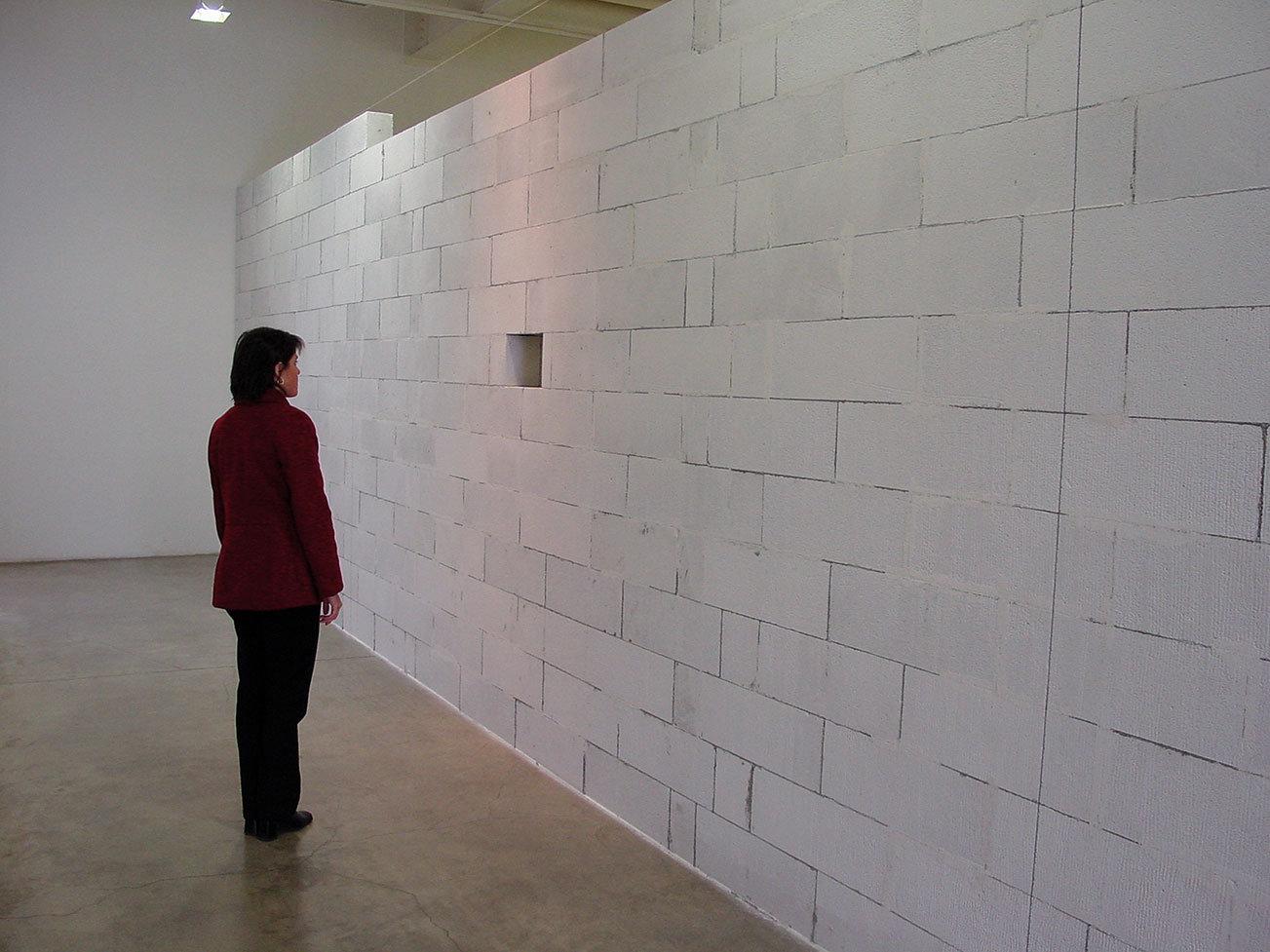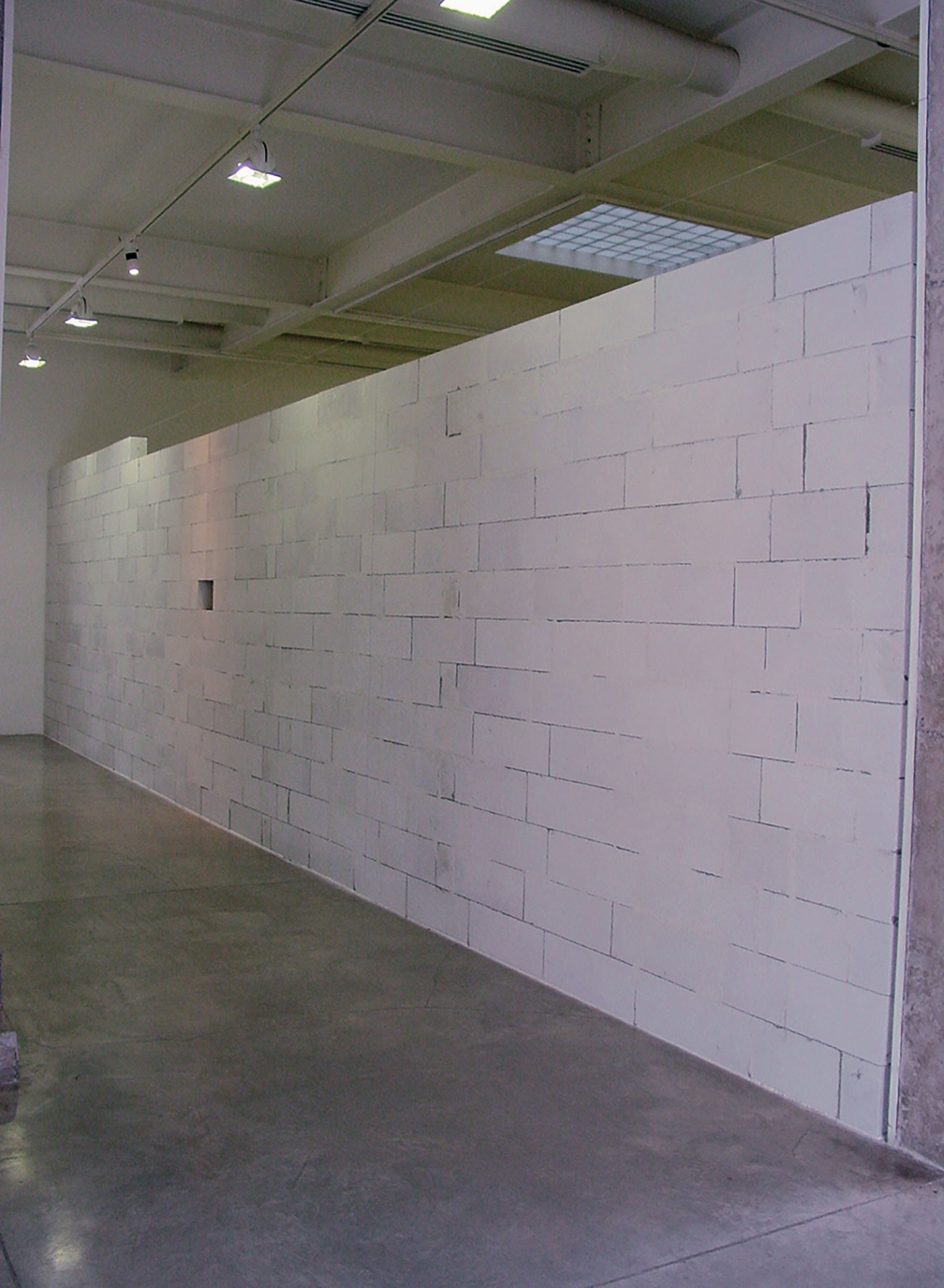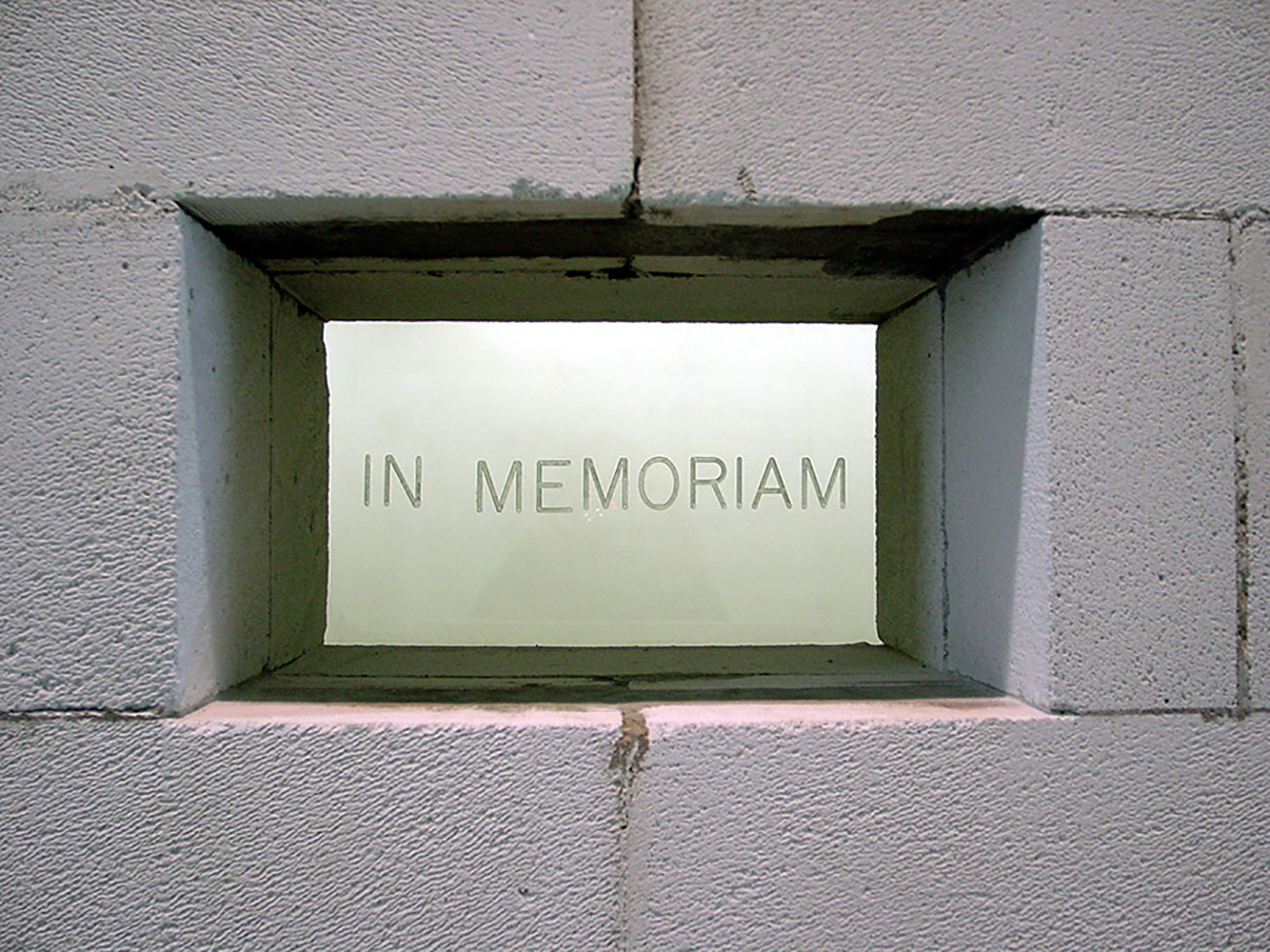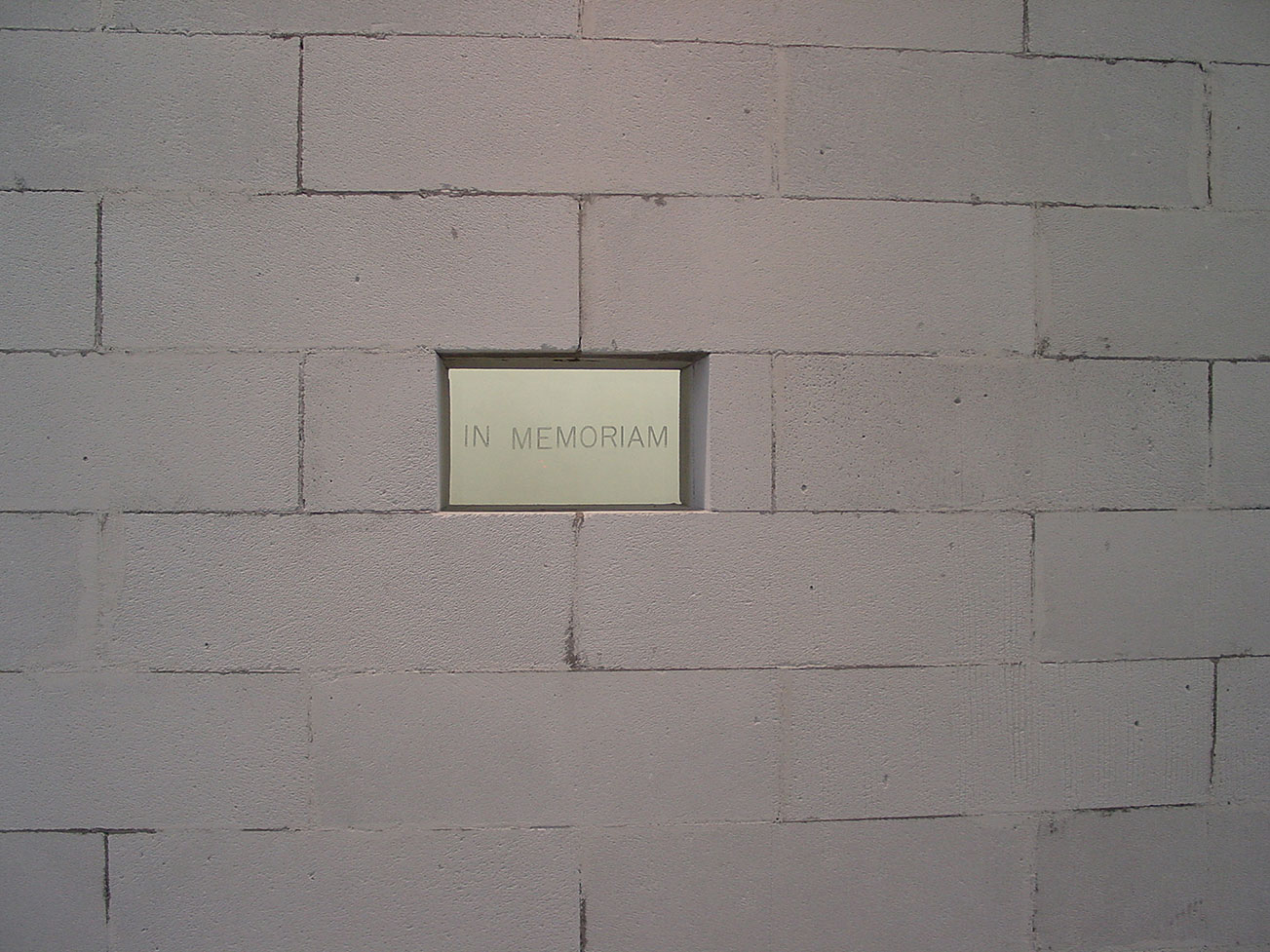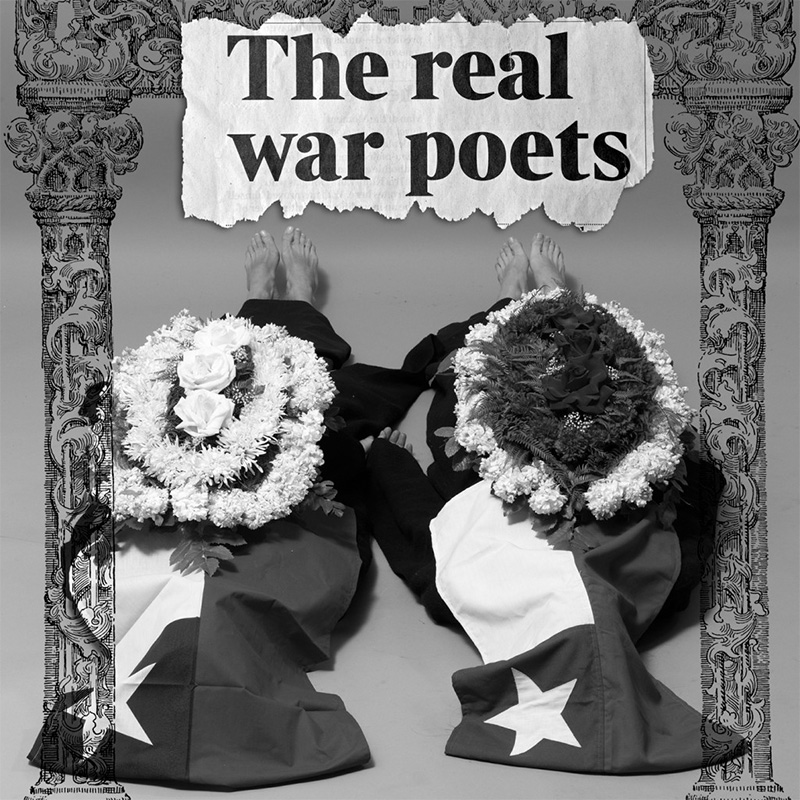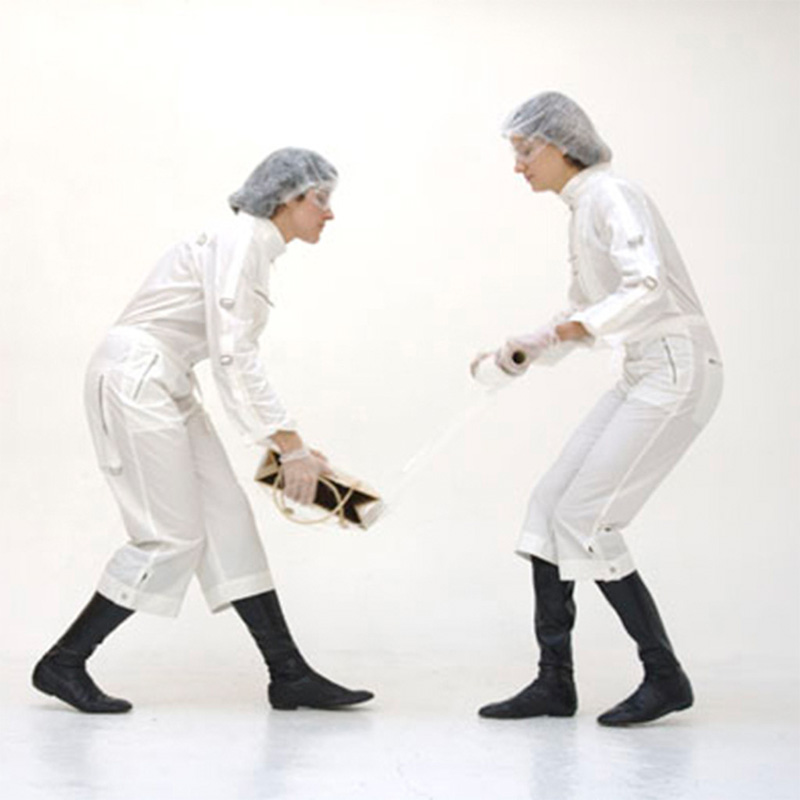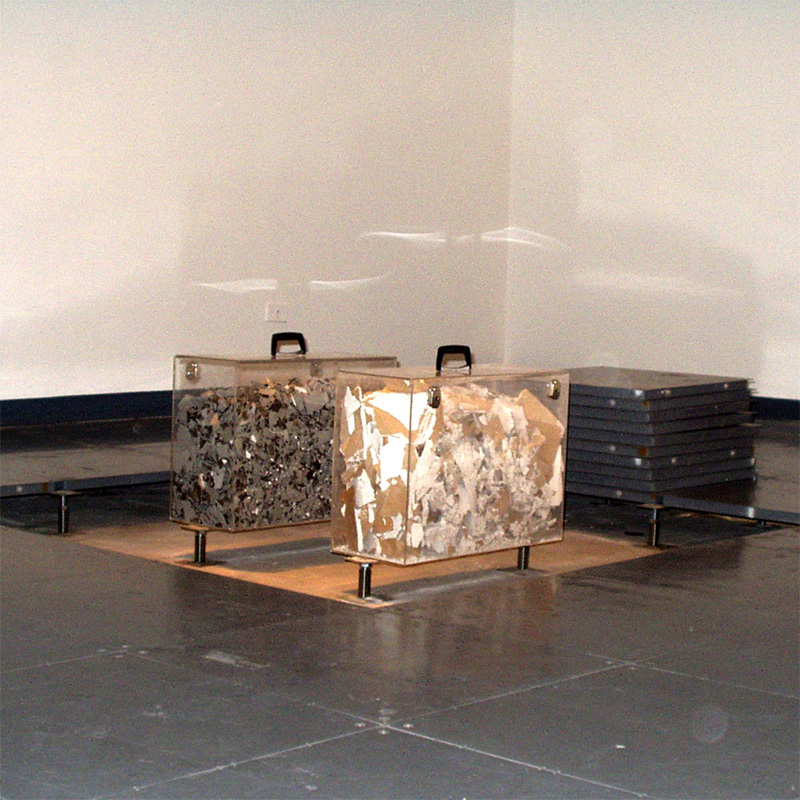OBITUARY was designed for the first-floor room of the Animal Gallery in Santiago, Chile. Consisting of a cellular concrete wall, 11.80m long and 4m high, located 9.05m from the back wall of the room, its location closed the exhibition space by preventing access to its interior and setting a new limit. At its heart, at eye level, we drilled the wall and sealed the space with a transparent stone that bore the inscription “IN MEMORIAM”. Thus the wall announced its death in the space, while conditioning the inward look of the room, now empty and uninhabitable, also within it’s own boundaries. We reiterated the concept of the gallery as a container of memory, installed as the object’s presence in a mausoleum. Walls are defensive works surrounding or protecting a territory, marking neighbourhood boundary disputes and many others recurrent in history and art. They are also elements that establish new spaces from the closures they generate. This sustainability objective was challenged by the limited duration of obituaries from 12 May to 5 June 2004, conditioning its meaning from the moment its life was pre-determined. The viewers presence struck up a confrontation with the irreversible nature of the gallery space, from an illusory contradiction, since its erection was not of any architectural purpose. By contrast, our intervention dislocated the viewer to confront his perception and bodily presence to the new limits imposed by our work. For three weeks the unfinished wall awaited his own death and foretold its disappearance, its travel in the memory of a fictional conflict except its own existence.
OBITUARY is a wall constructed in the main exhibition room in the gallery which closes off part of the exhibition space, hindering access to its interior. The inscription of the phrase IN MEMORIAM conducts our gaze towards the interior of the room, an uninhabitable space that is empty due to its own limitations, establishing our memory as an objectified presence.
OBITUARY is a platform for this work, within a process leading toward the artistic exploration of ones own memory of the installation, about its impermanence and transience, which, in possessing its own individual context, generates the act and can be understood as a stage. The specific relationship between time and space, that describes the exhibition as temporary and as a mobile event, creates from its special and temporal limitations a theatrical occurrence and a collaborative platform – a space for action and reaction. The space no longer acts as a representative container for unchanging values, but as a space to place temporary parameters. This gives the space a trans-action which, like a theatrical occurrence, is incorporated into a specific time; time in continuum.


